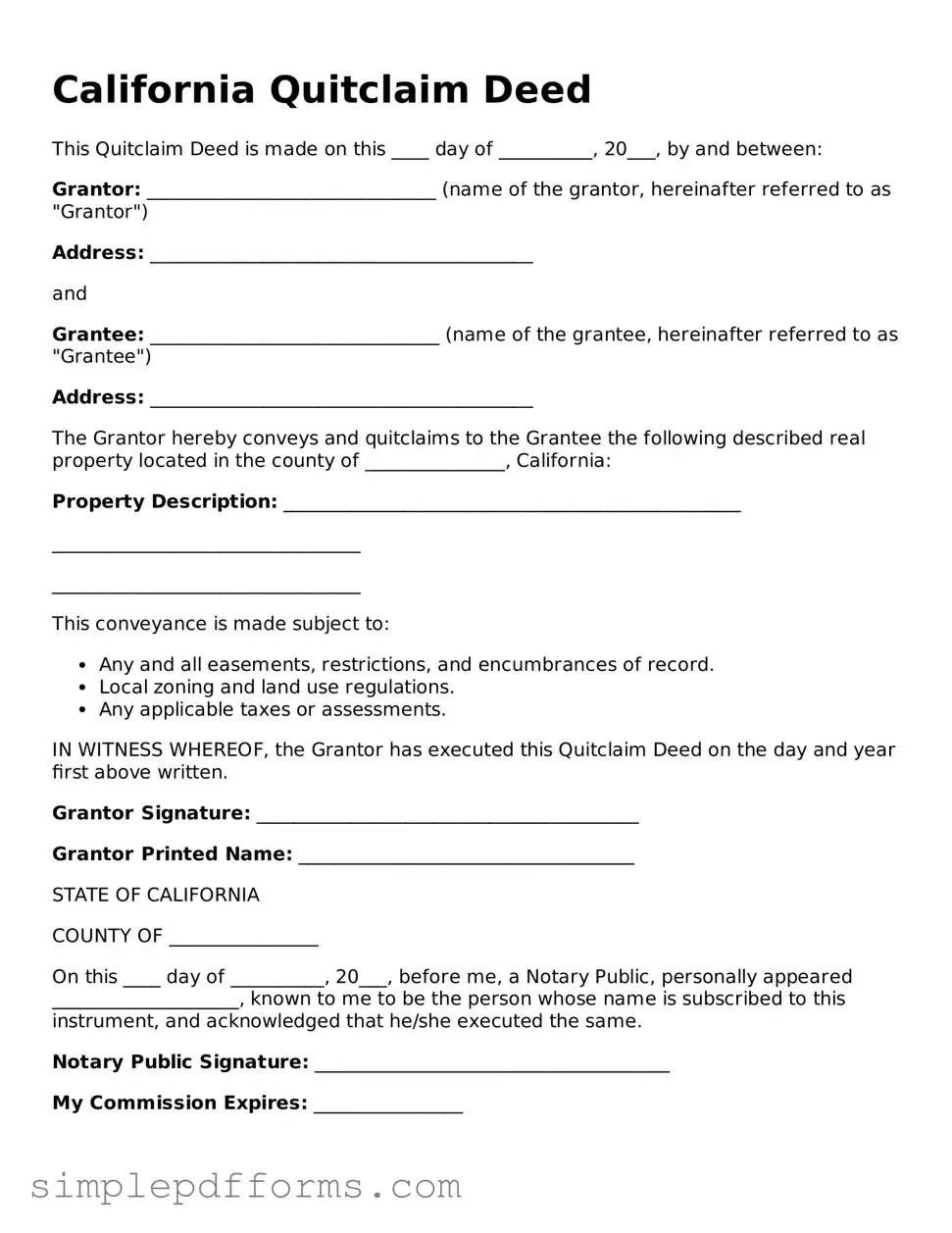California Quitclaim Deed
This Quitclaim Deed is made on this ____ day of __________, 20___, by and between:
Grantor: _______________________________ (name of the grantor, hereinafter referred to as "Grantor")
Address: _________________________________________
and
Grantee: _______________________________ (name of the grantee, hereinafter referred to as "Grantee")
Address: _________________________________________
The Grantor hereby conveys and quitclaims to the Grantee the following described real property located in the county of _______________, California:
Property Description: _________________________________________________
_________________________________
_________________________________
This conveyance is made subject to:
- Any and all easements, restrictions, and encumbrances of record.
- Local zoning and land use regulations.
- Any applicable taxes or assessments.
IN WITNESS WHEREOF, the Grantor has executed this Quitclaim Deed on the day and year first above written.
Grantor Signature: _________________________________________
Grantor Printed Name: ____________________________________
STATE OF CALIFORNIA
COUNTY OF ________________
On this ____ day of __________, 20___, before me, a Notary Public, personally appeared ____________________, known to me to be the person whose name is subscribed to this instrument, and acknowledged that he/she executed the same.
Notary Public Signature: ______________________________________
My Commission Expires: ________________
